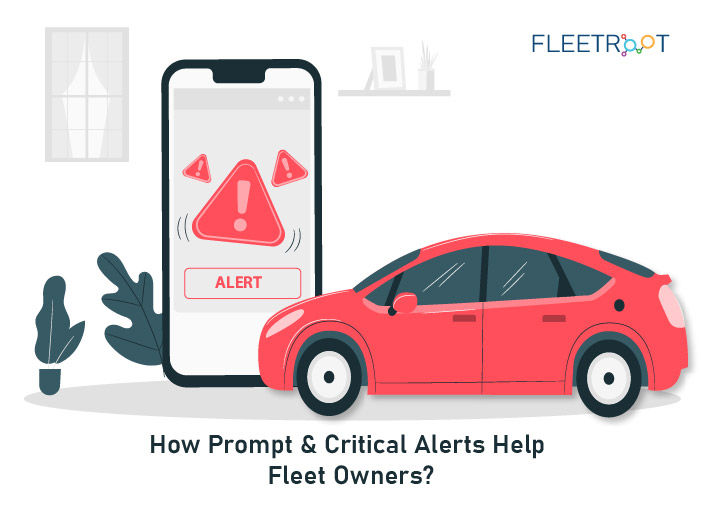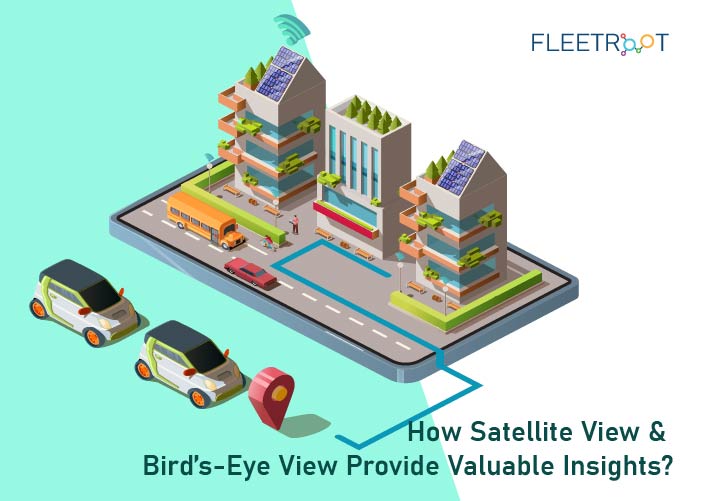All fleet management companies want their fleet drivers to be safe, be efficient, and support business growth.
Sensor technology plays an instructional role by providing intelligent and customizable alerts on several issues, including over-speeding, harsh braking, idling, engine performance, tyre pressure, and much more. Let us understand how GPS-based prompt and critical alerts can help fleet owners to meet safety and performance goals.
1.Driver Safety Alerts:
Alerts and notifications help businesses to monitor fleet drivers in real-time. Anything found amiss gets red-flagged immediately and is brought to the attention of fleet managers to avoid any mishap. Alerts help improve driver safety in the following ways:
Detect a Crash: If a vehicle is involved in a crash or has rolled over, the managers are instantly notified by phone or email.
Provide Help in Emergencies: When a driver pushes the emergency button, a critical alert is sent to the fleet manager, who then provides immediate help to the driver via hands-free communication over the mobile.
Notify Work Alone Timer Over-Limits: The work alone timer is usually set by drivers. When the driver doesn’t return to the vehicle by a specified time, an alert is sent to the fleet manager for further action.
Detect Non-Use of Seat Belts: When a driver is not wearing a seat-belt, then the fleet manager is notified, and an alert is sent to the driver.
Detect Major Rule Violations: When a driver is involved in any major rule violation, the fleet manager gets a notification via SMS or phone call.
Detect The Use of GPS/GSM Jammers: Fleet managers are immediately alerted when signal-jamming is detected. These alerts help to prevent vehicle hijacks and retrieve stolen commercial vehicles.
2.Life-saving Critical Driver Alerts:
Real-time interventions are truly valuable by providing timely warnings. Critical alerts prompt drivers to avoid unsafe driving or help to avert a ticket or a crash in the following ways:
Deal with Harsh Weather Conditions: During severe weather conditions, such as snow or storm, app-based alerts warn fleet drivers and help them select safer routes. These general alerts also help companies to save fuel and keep the loads safe.
Detect Driver Distraction & Fatigue: Statistics indicate that accident risk increases by 8.3% when a fleet driver is experiencing fatigue and has been driving for more than six hours.
A GPS tracker smart Driver Distraction Warning and Fatigue Detection System monitors a driver’s posture and helps to detect hand gestures and yawns.
It also detects erratic speed variations and inter-lane driving. If any of these occurs, the system issues a warning alert to the driver and initiates other suitable actions.
Monitoring & Improving Driving Behavior:
Advanced Driver Assistance System (ADAS) has cameras and sensors connected with a vehicle’s computer to look out for speed limit signs, lane markings, and other drivers. It improves driver behavior with real-time feedback.
When a driver’s driving speed marginally exceeds the set limit, a normal alert is triggered. But when the actual driving speed exceeds the limit to a large extent, then a critical alert is triggered to the manager to take immediate action.
Fleet managers can set custom alerts for their drivers based on their behavior, such as over-speeding, idling, harsh braking, rash driving, and more.
If fleet managers want drivers to slow down during rain or snow, then they can trigger a lower-limit speeding alert when a vehicle’s wipers are working.
Automated voice alerts within a vehicle can offer real-time advice to the driver when he speeds or brakes harshly. Safety detection systems trigger different kinds of alarms, such as buzzers, voice instructions, and visual alerts.
ADAS sounds a timely alarm of an imminent collision, which increases safety and reduces fleet costs associated with accidents.
ADAS technology allows fleet managers to analyze day-to-day driver performance and identify drivers who need teaching and coaching. This plays a vital role in improving driving behavior.
3.Alerts To Improve Fleet Performance and Driver Scores:
GPS alerts not only help businesses to improve driver behavior but also improve their fleet’s performance and maintenance. This, in turn, helps businesses to make significant savings.
Maintenance Alerts: With automated alerts, fleet managers can stay updated about the maintenance of their fleets and avoid costly repairs and unplanned downtime.
Vehicle Inspection Alerts: Fleet drivers get a checklist of vehicle inspection and trip instructions before and after a trip.
Electronic Driver/Vehicle Inspection Reports (DVIR): Drivers get fully-digitized checklists and e-DVIRs for easy access and use.
Driver/Fleet Scores: Drivers get scores to win prizes for top performance. This promotes driver safety and also helps businesses to identify which drivers need coaching. The drivers who are not performing well can be given relevant training that helps improve their scores.
Fleet Dash Cam Alerts: A vehicle’s dashboard camera captures road events and driver behavior, giving managers a clear picture of what’s happening on the road when required.
The camera automatically records a few seconds of video before and after an incident associated with sudden acceleration, hard braking, or harsh cornering.
These video recordings are attached to individual driver reports with a specific date, time, location, and speed details. Further, videos are analyzed and given a risk score.
The video analysis helps fleet managers to determine whether drivers were at fault for those incidents and whether they need any driver behavior modification.
Dash Cams help businesses to receive instant accident reports, absolve drivers with indisputable evidence, reduce resolution times for claims, and lower insurance premiums.
Conclusion:
Prompt and critical alerts in real-time help businesses to not only reinforce driver safety but also to improve the drivers’ performance and scores.
These alerts help fleet managers to monitor driver behavior, improve their efficiency, and stay up-to-date on fleet maintenance. So, are you ready to leverage GPS tracking system alerts to ensure driver safety and optimize your fleet operations?


